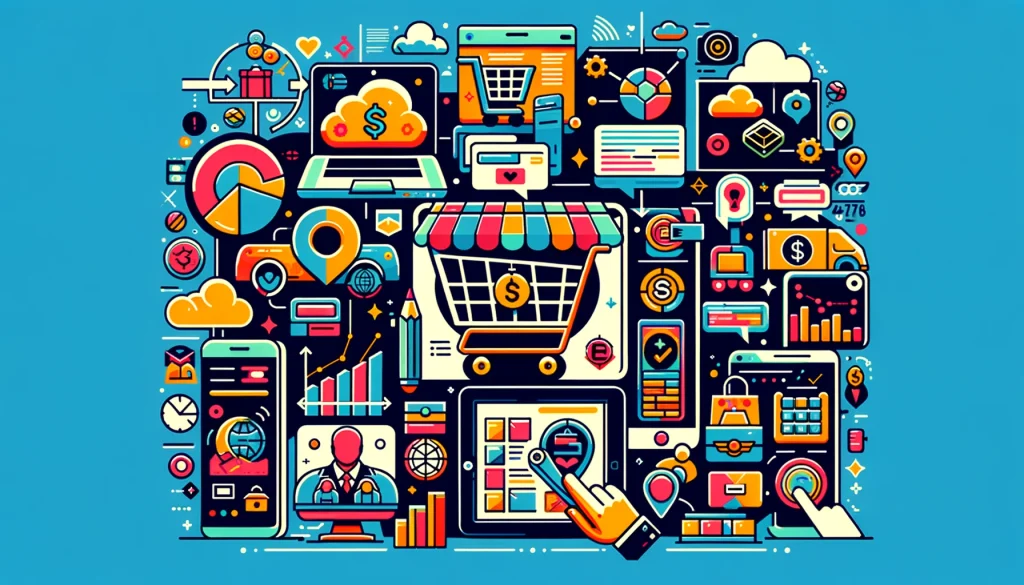E-commerce solutions are software platforms or systems designed to facilitate online buying and selling of goods and services. Here are the key components and functionalities typically found in e-commerce solutions:
Online Storefront:
Create and customize an online storefront with product listings, categories, and navigation menus.
Display product images, descriptions, prices, and availability.
Provide filtering and sorting options to help customers find products quickly.
Shopping Cart and Checkout:
Enable customers to add items to their shopping carts and proceed to checkout.
Offer multiple payment options, including credit/debit cards, digital wallets, and payment gateways.
Implement a secure checkout process with SSL encryption and PCI compliance.
Product Management:
Manage product catalog, including adding new products, updating existing ones, and removing discontinued items.
Set up product attributes, variations, and pricing options.
Define inventory levels, stock alerts, and backorder settings.
Order Management:
Process and manage orders from receipt to fulfillment.
Track order status, payment status, and shipping status.
Generate invoices, packing slips, and order confirmations.
Inventory Management:
Track inventory levels in real-time and synchronize with online store.
Receive alerts for low stock levels and out-of-stock items.
Implement inventory replenishment strategies, such as automatic reorder points.
Shipping and Fulfillment:
Integrate with shipping carriers for real-time shipping rates and label printing.
Offer various shipping options, including standard shipping, expedited shipping, and in-store pickup.
Generate shipping labels, packing slips, and tracking numbers.
Payment Processing:
Integrate with payment gateways to securely process online payments.
Support major credit/debit cards, digital wallets, and alternative payment methods.
Ensure PCI compliance and data security for handling payment information.
Customer Accounts and Profiles:
Allow customers to create accounts, log in, and manage their profiles.
Store customer information, order history, and preferences securely.
Offer personalized recommendations and promotions based on customer behavior.
Marketing and Promotions:
Run marketing campaigns, promotions, and discounts to attract and retain customers.
Create discount codes, coupons, and loyalty programs.
Integrate with email marketing platforms for targeted email campaigns.
Analytics and Reporting:
Monitor key performance indicators (KPIs) such as sales, conversion rates, and average order value.
Track website traffic, user behavior, and customer demographics.
Generate reports and dashboards to analyze e-commerce performance and identify opportunities for improvement.
Security and Compliance:
Implement security measures to protect customer data, payment information, and transaction records.
Ensure compliance with data privacy regulations (e.g., GDPR, CCPA) and industry standards.
Regularly update software, apply security patches, and conduct security audits to mitigate risks.
Mobile Optimization:
Ensure that the e-commerce website is optimized for mobile devices and responsive across different screen sizes.
Provide a seamless shopping experience on mobile browsers and mobile apps.
Enable features such as mobile-friendly navigation, one-click checkout, and touch-friendly interfaces.





